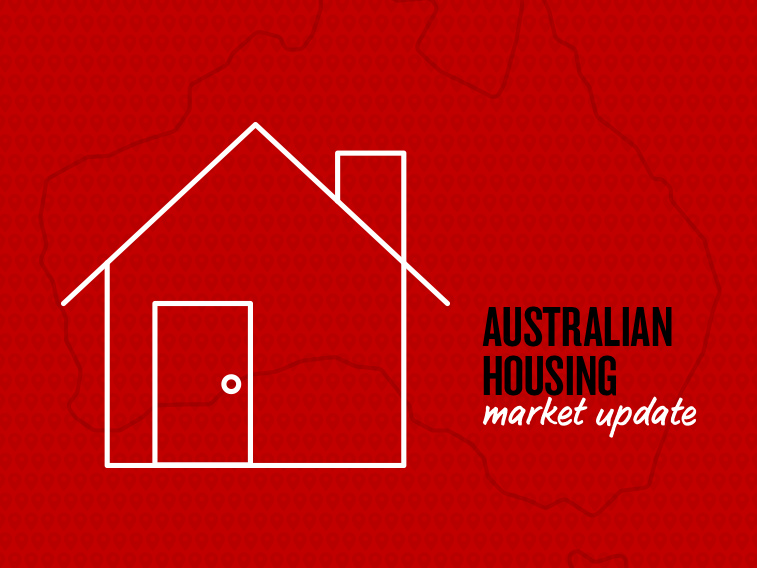Hear NAB’s senior expert panellists discuss a range of topics to provide key insights to help you and your business prepare for the current property market climate.

Latest report shows a 1.2% rise in national dwelling values, delivering the fourth straight month of rising values.

In this month’s update we cover housing market conditions through to the end of October, and focus on the impact of stronger housing credit flows and a rise in buyer activity amidst low advertised supply levels. Last month’s Home Value Index results reported a 1.2% rise in national dwelling values over the month, delivering the fourth straight month of rising values.
Watch the video now to get the national update.
Find out the latest news for each capital city by clicking the link and watching the videos below or read the full November Housing Market Update Transcript.
Sydney
Brisbane
Melbourne
Adelaide
Perth
Transcript summary
Last month’s Home Value Index results reported a 1.2% rise in national dwelling values over the month, delivering the fourth straight month of rising values. The October result was the largest month-on-month gain in the national index since May 2015. The recent gains come after a broad-based decline in housing values, with the national index declining 8.4% between October 2017 and June 2019. The positive October result takes national dwelling values 2.9% off their June 2019 floor, however values remain 5.7% below their peak, highlighting that despite the recent gains, home values are at a similar level to where they were three years ago.
The strongest growth conditions continue to be centered in Melbourne and Sydney, however dwelling values trended higher across most of the capital cities in October as lower mortgage rates and improved credit availability spurred on buyer demand. Dwelling values were up across every capital city apart from Perth over the month, and based on the rolling three-month change, the only capitals where values fell were Perth and Darwin.
Thirty-eight of the forty-six capital city sub-regions have recorded a rise in dwelling values over the most recent three month period, demonstrating the recovery trend is becoming more geographically diverse.
The recent trend across the regional markets of Australia has seen a clear improvement in the performance of housing across the major centres adjacent to Sydney and Melbourne, as well as rising values in many of the coastal lifestyle markets. Conversely, drought-affected areas have seen a drop in demand for housing with values falling sharply across many of the rural sub-regions associated with crops and grazing.
It’s remarkable to think it was less than six months ago when dwelling values were falling across most regions of the country and now we are seeing many cities recording the strongest growth conditions in several years. The combined effect of lower interest rates, improved access to credit, a stable federal government and generally more affordable housing prices compared with a few years ago are the main factors that have supported a turnaround in housing trends.
Although housing values are recovering and the trend in rising values is becoming more geographically diverse, buyer activity remains well below normal. CoreLogic estimates there were 101,000 dwelling sales over the three months ending October 2019 which is roughly level with a year ago but about 13% below the decade average.
Some of the reasons for such low levels of activity include persistently weak consumer sentiment which is likely weighing on willingness to make high commitment decisions, as well as low advertised stock levels and credit conditions that remain tighter relative to a few years ago, despite borrower serviceability tests recently loosening.
Consumer sentiment hasn’t been this low since 2015 due to households feeling increasingly pessimistic about family finances and the economic outlook. It seems that Australians are increasingly looking through the low interest setting to the underlying economic weakness that has pushed interest rates so low.
Although new listings have increased by 65% between their seasonal winter low and the twenty eight days ending November 3, advertised listing numbers remain 14% lower than a year ago across the combined capitals, with total stock levels even lower relative to last year in Sydney and Melbourne. Advertised stock levels haven’t been this low for this time of the year since 2009 and new listings being added to the market haven’t been this low for this time of the year since CoreLogic started tracking listings in 2007. No doubt low stock levels and an increase in buyer activity is adding to some competitive tension in the market which is another factor pushing up prices.
If stock levels start to surge higher through late spring and early summer, a rise in advertised supply could dampen some of the exuberant price growth we have seen over the second half of the year.
The value of new housing credit commitments for owner occupiers surged 11.9% higher over the three months to August and investor commitments were 11.6% higher. Housing credit is starting to flow again, however the rise is coming off a low base and obtaining approval for a loan remains harder than prior to the Banking Royal Commission as lenders focus on borrower expenses and reducing their exposure to borrowers with high debt to income ratios and loan to value ratios.
If credit trends accelerate further, or speculative investment becomes over represented in the market we could see regulators intervening in the market. If recent history is anything to go by, a new round of macro prudential policy initiatives would likely have an immediate effect on market conditions.
The next few months should provide a clearer indication around how the housing market performs across higher listing numbers and higher volumes, testing the depth of the market.
© National Australia Bank Limited. ABN 12 004 044 937 AFSL and Australian Credit Licence 230686.